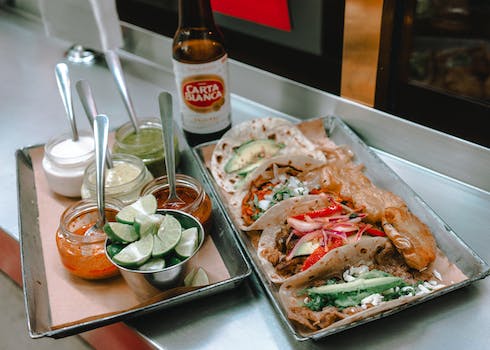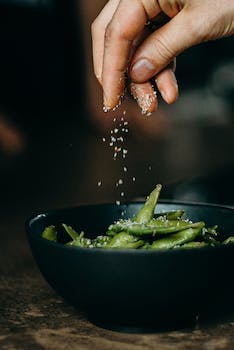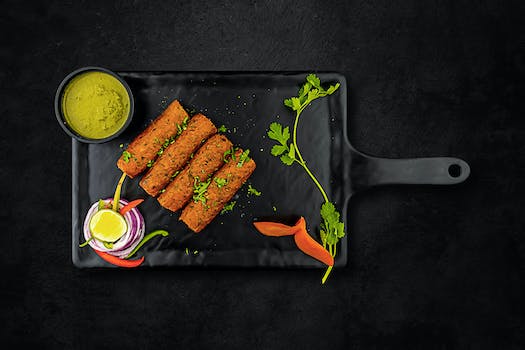

-
Table of Contents
Discover the vibrant flavors and cultural heritage of Mexican cuisine: From Tamales to Tacos.
Introduction
Mexican cuisine is renowned for its vibrant flavors, diverse ingredients, and rich culinary traditions. From the iconic tamales to the beloved tacos, Mexican cuisine offers a tapestry of flavors that reflect the country's history, culture, and regional diversity. This article delves into the fascinating world of Mexican cuisine, exploring its origins, key ingredients, and popular dishes that have captivated taste buds around the globe. Join us on a culinary journey as we unravel the intricacies and delights of Mexican cuisine.
The History and Evolution of Tamales in Mexican Cuisine
The history and evolution of tamales in Mexican cuisine is a fascinating journey that spans centuries. Tamales, a traditional Mexican dish made of masa (a dough made from corn) filled with various ingredients, have been a staple in Mexican cuisine for generations. The origins of tamales can be traced back to the ancient Mayans and Aztecs, who first cultivated corn and developed the technique of making masa.
The Mayans and Aztecs considered corn to be a sacred crop, and they believed that the gods had created humans from corn. As a result, corn held a significant cultural and religious importance in their societies. The Mayans and Aztecs used corn to make masa, which they then used to make tamales. These early tamales were simple, consisting of masa filled with beans, meat, or vegetables, and wrapped in corn husks.
When the Spanish conquistadors arrived in Mexico in the 16th century, they encountered the indigenous people and their culinary traditions, including tamales. The Spanish were intrigued by the unique flavors and techniques used in Mexican cuisine, and they quickly adopted tamales as part of their own culinary repertoire.
The Spanish introduced new ingredients to Mexico, such as pork, chicken, and spices like cinnamon and cloves. These ingredients were incorporated into tamales, adding new flavors and textures to the traditional dish. The Spanish also introduced the use of lard, which gave tamales a richer and more indulgent taste.
Over time, tamales evolved to reflect the diverse regional cuisines of Mexico. Each region developed its own unique style of tamales, using local ingredients and flavors. For example, in the coastal regions of Mexico, seafood tamales became popular, filled with shrimp, fish, or crab. In the central highlands, tamales were often filled with pork and served with a spicy salsa.
In addition to regional variations, tamales also became associated with specific occasions and celebrations. In Mexico, tamales are often made for special events such as weddings, birthdays, and religious holidays. The process of making tamales is seen as a communal activity, with family and friends coming together to prepare the masa, fill the corn husks, and steam the tamales.
Today, tamales continue to be an integral part of Mexican cuisine, enjoyed by people of all ages and backgrounds. They can be found in street stalls, markets, and restaurants throughout Mexico and beyond. Tamales have also gained popularity in other parts of the world, thanks to the growing interest in Mexican cuisine.
In conclusion, the history and evolution of tamales in Mexican cuisine is a testament to the rich tapestry of flavors and traditions that make up Mexican food. From their humble origins with the Mayans and Aztecs to their incorporation of Spanish ingredients and techniques, tamales have evolved into a beloved dish that represents the diverse culinary heritage of Mexico. Whether enjoyed as a street food snack or as part of a festive celebration, tamales continue to captivate the taste buds and hearts of people around the world.
Unveiling the Regional Varieties of Tacos in Mexico

Mexico is a country known for its vibrant culture, rich history, and of course, its delicious cuisine. Mexican food has gained popularity all over the world, with dishes like tacos and tamales becoming household names. However, what many people may not realize is that Mexican cuisine is incredibly diverse, with each region having its own unique flavors and specialties. In this article, we will delve into the world of Mexican tacos, exploring the regional varieties that make this dish so fascinating.
Tacos are a staple in Mexican cuisine, and they come in many different forms. From the traditional street tacos to the more elaborate gourmet versions, there is a taco for every palate. What sets Mexican tacos apart is the variety of fillings and toppings that can be used. Each region in Mexico has its own take on tacos, incorporating local ingredients and flavors to create a truly unique culinary experience.
In the northern region of Mexico, particularly in the states of Sonora and Chihuahua, you will find the famous carne asada tacos. These tacos are made with grilled beef, usually marinated in a mixture of lime juice, garlic, and spices. The meat is then thinly sliced and served on a warm tortilla, accompanied by fresh salsa, guacamole, and sometimes a squeeze of lime. The simplicity of these tacos allows the flavors of the beef to shine through, making them a favorite among meat lovers.
Moving to the central region of Mexico, specifically in Mexico City, you will find a wide variety of tacos that reflect the cosmopolitan nature of the capital. One popular type of taco in this region is the al pastor taco. This taco is made with thinly sliced pork that has been marinated in a mixture of spices, including achiote, pineapple, and various chili peppers. The meat is then cooked on a vertical spit, similar to the way shawarma is prepared. The result is a flavorful and juicy taco that is often topped with diced onions, cilantro, and a squeeze of lime.
In the southern region of Mexico, particularly in the state of Oaxaca, you will find tacos that are filled with unique ingredients and flavors. One such taco is the tlayuda taco, which is made with a large, crispy tortilla that is topped with refried beans, Oaxacan cheese, and a variety of meats such as chorizo or tasajo (thinly sliced beef). This taco is then folded in half and grilled until the cheese is melted and gooey. The tlayuda taco is often served with a side of salsa and guacamole, adding an extra layer of flavor to an already delicious dish.
Lastly, we cannot talk about regional tacos in Mexico without mentioning the Yucatan Peninsula. In this region, you will find tacos that are heavily influenced by Mayan cuisine. One popular taco in this area is the cochinita pibil taco, which is made with slow-roasted pork that has been marinated in a mixture of citrus juices, achiote paste, and spices. The meat is incredibly tender and flavorful, and it is often served with pickled onions and habanero salsa, adding a tangy and spicy kick to the dish.
As you can see, the world of Mexican tacos is vast and diverse. From the northern states to the southern regions, each area has its own unique take on this beloved dish. Whether you prefer the simplicity of carne asada tacos or the complexity of cochinita pibil tacos, there is a taco out there for everyone. So the next time you find yourself craving Mexican food, why not explore the rich tapestry of flavors that Mexican cuisine has to offer?
Exploring the Diverse Flavors and Ingredients of Mexican Salsas
Exploring the Rich Tapestry of Mexican Cuisine: From Tamales to Tacos
Mexican cuisine is renowned for its vibrant flavors, diverse ingredients, and rich culinary traditions. From the iconic tamales to the beloved tacos, Mexican food has captivated the taste buds of people around the world. One aspect that truly sets Mexican cuisine apart is its wide array of salsas, which play a crucial role in enhancing the flavors of various dishes. In this section, we will delve into the diverse flavors and ingredients of Mexican salsas, uncovering the secrets behind their irresistible taste.
Salsas are an integral part of Mexican cuisine, serving as a versatile condiment that can be used to enhance the flavors of countless dishes. They come in a variety of forms, ranging from smooth and creamy to chunky and spicy. Each region in Mexico has its own unique salsa recipes, showcasing the country's culinary diversity.
One of the most popular types of salsa is the classic salsa roja, or red salsa. Made primarily from tomatoes, onions, and chili peppers, this salsa is known for its vibrant red color and bold flavors. The heat level can vary depending on the type of chili peppers used, with jalapeños and serranos being common choices. The salsa roja is often used as a table salsa, accompanying dishes such as tacos, enchiladas, and grilled meats.
Another beloved salsa is the salsa verde, or green salsa. As the name suggests, this salsa is made from green ingredients, such as tomatillos, green chili peppers, and cilantro. The tomatillos give the salsa a tangy and slightly acidic flavor, while the chili peppers add a spicy kick. Salsa verde is commonly used in dishes like chilaquiles, enchiladas verdes, and as a topping for grilled meats.
Moving beyond the classic red and green salsas, Mexican cuisine offers a plethora of other salsa varieties, each with its own unique flavors and ingredients. For those who enjoy a smoky flavor, the salsa de molcajete is a must-try. This salsa is made by grinding together roasted tomatoes, garlic, onions, and chili peppers in a traditional stone mortar and pestle called a molcajete. The result is a rustic and flavorful salsa that pairs perfectly with grilled meats and tortilla chips.
If you're looking for a fruity twist, the salsa de mango is a delightful choice. Made from ripe mangoes, lime juice, chili peppers, and cilantro, this salsa strikes the perfect balance between sweet and spicy. It is often served alongside seafood dishes or used as a topping for grilled fish.
In addition to the wide range of flavors, Mexican salsas also showcase the country's diverse ingredients. From the staple ingredients like tomatoes, onions, and chili peppers to the lesser-known ones like tomatillos, mangoes, and even chocolate, Mexican salsas incorporate a wide variety of fresh and flavorful ingredients.
In conclusion, exploring the diverse flavors and ingredients of Mexican salsas is a journey that unveils the true essence of Mexican cuisine. From the classic red and green salsas to the smoky salsa de molcajete and the fruity salsa de mango, each salsa variety offers a unique taste experience. Whether you're a fan of spicy or prefer a milder flavor, there is a Mexican salsa to suit every palate. So, next time you indulge in Mexican cuisine, be sure to savor the rich tapestry of flavors that these salsas bring to the table.
Q&A
1. What are some popular dishes in Mexican cuisine?
Tamales, tacos, enchiladas, chiles rellenos, and mole are some popular dishes in Mexican cuisine.
2. What are tamales?
Tamales are traditional Mexican dishes made of masa (a dough made from corn) filled with various ingredients such as meat, cheese, or vegetables. They are wrapped in corn husks and steamed.
3. What is mole?
Mole is a rich and flavorful sauce in Mexican cuisine. It is made from a combination of chili peppers, spices, nuts, seeds, and chocolate. Mole is often served over meat or poultry.
Conclusion
In conclusion, Mexican cuisine offers a diverse and vibrant culinary experience. From the traditional tamales to the iconic tacos, the rich tapestry of Mexican cuisine showcases a wide range of flavors, ingredients, and cooking techniques. Exploring this cuisine allows one to delve into the country's cultural heritage and appreciate the depth and complexity of Mexican gastronomy. Whether it's the spicy salsas, the hearty stews, or the refreshing ceviches, Mexican cuisine continues to captivate food enthusiasts worldwide with its bold and authentic flavors.












